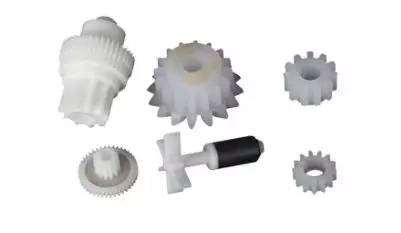There are many factors that affect the cooling of the
injection mold, such as the shape of the plastic part and the design of the parting surface, the type, temperature and flow rate of the cooling medium, the geometric parameters and spatial arrangement of the cooling pipe, the mold material, the temperature of the melt, the ejection temperature and mold temperature required for the plastic part, and the interaction of the heat cycle between the plastic part and the mold.
Low mold temperature can reduce the molding shrinkage of plastic parts.
Uniform mold temperature, short cooling time and fast injection speed can reduce the warpage of plastic parts.

For crystalline polymers, increasing the mold temperature can stabilize the size of the molded part and avoid post-crystallization phenomenon, but it will lead to longer molding cycle and brittle defects of the molded part.
As the crystallinity of crystalline polymers increases, the stress cracking resistance of the plastic decreases, so it is advantageous to lower the mold temperature. However, for high viscosity amorphous polymers, it is advantageous to increase the mold temperature and mold filling speed to reduce the replenishment time because the stress cracking resistance is directly related to the internal stress of the molded part.
Increasing the mold temperature can improve the surface quality of the molded part. Mold temperature is determined during the injection molding process, mold temperature directly affects the plastic filling, plastic part setting, molding cycle and plastic part quality.
The temperature of the mold depends on the crystallinity of the plastic, the size and structure of the part, the performance requirements and other process conditions such as melt temperature, injection speed, injection pressure and molding cycle.
For amorphous polymers, the melt is injected into the mold cavity and cured as the temperature decreases, but there is no phase change, and the mold temperature mainly affects the viscosity of the melt, i.e., the mold filling rate. Therefore, for amorphous plastics with low and medium melt viscosity, such as polystyrene and cellulose acetate, the cooling time can be shortened by using lower mold temperature.

Latest blog posts
Custom molds injection molding
Custom molds injection molding is a manufacturing process that involves creating custom molds to produce plastic parts. Injection molding is a popular technique used in various industries such as...
Plastic injection molding companies
Plastic injection molding is a manufacturing process that involves injecting molten plastic into a mold to create a wide range of plastic products. From car parts to medical devices and household items, plastic injection molding is used to create a variet
PET Preform Injection Moulding Machine
PET preform injection molding is a manufacturing process that is used to create PET (polyethylene terephthalate) preforms that can be later blown into bottles, jars, and other containers. This process...
You may like
How to judge the quality of the finished product of silicone injection molding process
Plastic products I think we should not be unfamiliar with it, with the development of modern technology, more and more plastic products continue to emerge in front of everyone, so as a consumer...
Several common ways of injection mold processing drive
The driving and driving force of injection mold processing movement (punching force, the clamping force of injection mold, drop weight of the material, extrusion force, etc.) is provided...
What are the key factors in choosing a bottle mould?
During the production process, we often struggle to choose what kind of hot runner nozzle for bottle blast moulds. For this reason, through investigation, I learned that the factors...
What are the requirements for temperature control during the injection molding process?
Injection molding process is also called injection molding, which is a kind of injection and molding molding method. The advantages of injection molding process are fast production speed...